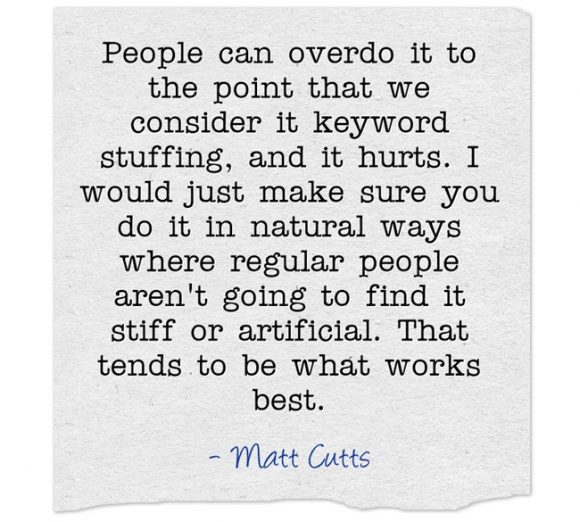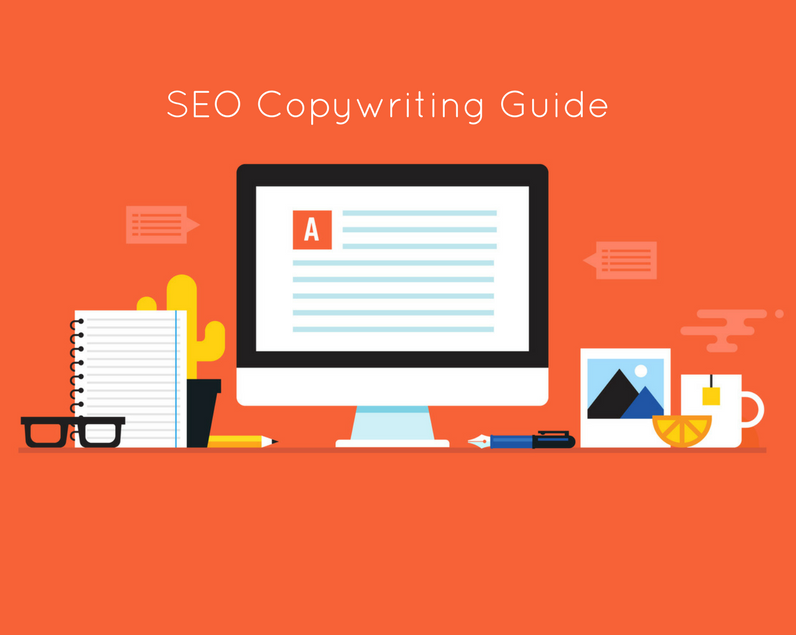One of the main things that drives people to your website is content. It’s one of the primary things Google indexes to create results for searches that are applicable to your website. While great content and content that’s great for search results may not always look the same at first glance, you can work on making your content stand out from the crowd and optimized for search engines.
It’s an essential part of promoting your website, finding new visitors, and turning your brand into a powerhouse.

What is SEO Copywriting?
SEO copywriting is all about creating content that’s designed to help your search engine rank. Even a great page of content may be tweaked to provide better performance on search engines. When you’re writing a page of content for your website, whether it’s a blog post, a product advertisement, or a landing page, always keep search engine optimization in mind.
Every part of your site should be designed with SEO in mind, but content is one area to especially pay attention. The reason for that is because your content is the thing that will be updated most on your site. Since your place in search results may be boosted if you update more often, SEO copywriting is a habit you’ll want to develop early on.
Of course, if you already have a lot of content that isn’t optimized for search engines, you can go back and make it stronger. Updating your old content may also give you a boost, and is worth the time it takes to do so.
What are the Goals of SEO Copywriting?
Copywriting for SEO done well has three parts. First, you must write content that delivers the message you want your site visitors to absorb. Second, you must write it in a compelling, clear way that encourages people to read it and makes them want to come back. Third, you must write and present the content in a way that makes it easier for search engines to crawl your site and present it when the right keyword search is performed.
Ultimately, these will contribute to the three primary goals of SEO copywriting.
- Filling your site with great content that’s straightforward and written to your audience.
- Structuring that content so that a search engine has an easy time indexing it.
- Boosting your position in search results, leading to increased clicks and visitors.
It’s all about playing nice with what search engines want so that you can reap the benefits of getting to the top of the search results. Since the first result on Google gets 33 percent of the traffic, and every result down gets exponentially less, even one upward position can make a substantial difference. If you’re not on the first page of Google search results for your targeted keywords, don’t despair. That can be your first goal as you improve your SEO copywriting and update old content.
Cornerstones of SEO Copywriting
To become skilled at copywriting for SEO, keep in mind the best practices as you write. That way, you’re always working to make your content better and more likely to be shared.
Compelling Content
Writing compelling content is the most important aspect of SEO copywriting, which cannot be stressed enough. The reason for this is that search engines put a lot of weight on how many quality links from trusted domains link back to your content. When they like your content and share it in a positive way, you get two different benefits:
- People who follow the site linking to you are more likely to click the link and discover your site organically. It may lead to other shares and links on other sites, too.
- It increases the amount of link juice you have.
Keyword Research
When you’re writing content designed to get people on your website, do keyword research to make sure that not all the keywords you’re targeting are competitive. You want a good mix of different types of keyword types. A handful of competitive high-value keywords that are hard to rank may surprise you when you rank higher than expected. Lower competition long-tail keywords will be easier for you to get rank in when you’re first starting, though. So when you’re designing a piece of content, consider the keywords you want to target before you start writing.
Content Research
Do your research on the topic you’re writing about before you start the writing process. Having a good grasp of the topic will make your content better and provide a good first impression to any new visitors. Putting out mediocre content quick may seem appealing, but in the long run writing high-quality content with helpful information will lead to better performance for your site.
Proper Structure
Once you have a great content piece ready, you need to put it in a compelling frame. Having relevant images that are attractive and eye-catching, related videos, and a catchy headline. Since the headline may be picked up as the title of your search results, make sure it explains the content and makes people want to look at it. Great copywriting is improved by having all the right link types, keywords, images, and structure to present it properly.
Keywords
So how do you find the right keywords to build your content around? Use a keyword research tool. There are several available from Google, Moz, and Wordstream, for example. Type in a keyword you want to see results for, and then explore the available data. Look for keywords that have many searches, but lower competition. Ones with a lot of competition will be hard to rank for. Keywords with few searches won’t give you as much benefit as ones that get many searches.
Most tools will also give you data for long-tail keywords. These are longer, more specific keywords that people search for and may deliver lower competition for more searches than standard keyword phrases. If your website is relatively new and lacking in the authority to take on the major industry competitors then it maybe wise to target multiple long-tail keywords and build up traffic and authority to your site and brand that way though.
Tips for Better Keyword Research
- Think outside the box. If you’re not sure what keywords to use, put yourself in your customer’s shoes. Try to figure out what he might look for. Think what queries a searcher might type if they are asking a question you have the answer to. Keep a list of keyword phrases you’ve considered.
- Read through competitors’ websites to determine what keywords they’re targeting. It may help you come up with ideas to put into the tool.
- Give yourself some room to experiment. Not every piece of content you publish has to be a homerun, because it will also provide other benefits for your site—even if it doesn’t get a lot of views. It’s okay to try something new to see how it performs and test it on your own site. You may discover a great keyword or phrase others in your niche haven’t yet.
Setting Up SEO-Friendly Documents
One important consideration when performing SEO copywriting is that you can’t just dump paragraphs on the page like an essay. Web content should be formatted differently than other types of content, simply because it will be read and examined differently.
Consider using headings to break up your document. Think of them as the bones of your content. They make it easier for a visitor to skim the page and find the content that’s relevant to them. Don’t make your paragraphs too long. Short paragraphs or a mix of lengths is more readable and attractive.
Choose a font that isn’t hard to read. You’re looking for something attractive that fits with your page, but nothing fancy with lots of flourishes. If it’s hard for a visitor to read your site, they may move on and not come back. Always think readability when you’re working on your copy cosmetics.
“On a typical blog, only about 2% will spend more than two minutes reading a post”
Neil Patel, Quicksprout.com
Writing SEO-Friendly Content
Think of your content as a conversation between you and the person visiting your site. Depending on your niche and the approach you want to take, you might keep things more casual or more formal. For example, a recipe site that uses real-life anecdotes might address people like old friends. A site trying to rent business conference spaces probably wants to keep things more professional. Choose a tone and stay on it throughout your site.
Use the active voice when possible. Don’t force it, but do try to write in such a way that most of your sentences are active rather than passive. It is a cleaner writing style that resonates with most readers. Also, use powerful words that inspire emotion in the person reading your content. When they connect with your words, they’re more likely to connect with your site.
“Using active voice helps people picture themselves taking action, so it’s no surprise that it’s considered so important in marketing copywriting. After all, when you write your page copy, you want it to convert – and that means convincing readers to take action on your offer”
Sharon Hurely Hall, Sharonhh.com
Determine what questions your content could answer, and then work that into the content. Many people search for questions when they don’t know the answer to something, and if you provide the answer, you might rise in search results.
Finally, don’t skimp on the words. Writing more than 1500 words not only offers more space to answer questions and explain concepts, but it also provides more room for links and keywords. You don’t need to go overboard; every post isn’t a novel. But don’t cut yourself off, either. Write to the topic, and try to go long. Neil Patel of Quicksprout found that pages that ranked higher on Google were likely to have more than 2000 words. Pages that were higher in the results tended to have more words than those lower in the results as well.

7 Ways to Improve Your SEO Copywriting
Don’t Keyword Stuff Your Content
Old SEO professionals often suggested stuffing in the keyword you’re targeting as much as possible in a post. But that creates an unreadable and unattractive piece of content. Instead, keep your tone natural and appealing. Use different variations of your keyword to target other potential searchers with your content.
Pay Attention to Your Metadata
Your metadata is information about your content that doesn’t appear on the page, but is visible to search engines. It may determine how your site’s search result appears on Google. Make sure to optimize your metadata before you publish your page. Even great SEO copywriting needs the right frame to get those initial views before your site develops a large following.
Create a Blend of Link Types
Not every link on your page should go to a different site. If you have other content that offers more information about a topic you touch on in your content, link it in your piece. It keeps people on your site, shows the breadth of your knowledge, and improves the utility of what you’re writing by offering a portal to other information.
Always Check for Errors
Errors aren’t only grammatical issues or misplaced commas. They can also be using the same word too often, or not varying sentence lengths. You don’t have to be a perfect, professional writer to create good content. Using a great editor can be highly beneficial in making your writing better and more attractive to visitors. Look for any issue that makes reading the piece less than smooth.
Look for Places to Quote Experts
Not only will quoting experts offer an SEO benefit, but it will also add authority to your piece. Read through the content that others in your niche are developing to see what they’re saying. Once you find something relevant, quote the person and link back to their site.
Keep a Steady Flow of Information
Repeating yourself in SEO copywriting isn’t a bad thing—but you should be introducing new ideas as your piece develops, too. Repetition helps drive home the most important points you need to make. New information keeps the content moving and interesting, as well. Try to only repeat the things that are vital for a reader to understand in a single piece of content.
Back Up Your Facts
If you cite a quote, paper, study, or fact, link to it in the body of your content. Make sure you find the best source possible for that link, too. For example, linking to a study itself offers more utility to your reader than linking to a fluff news piece about that study. Always err on the side of value when making decisions in your copywriting. Good content will lead to good PageRank, as long as you also focus on things like content outreach and metadata best practices.
Conclusion
SEO copywriting is an important skill to cultivate and master as you build your website and develop a following. It’s the base of your site and your communication with visitors. You can always hire a professional if you don’t have the time or inclination to learn, but feel confident that you can also write powerful content yourself if you’re so inclined.


4 thoughts on “The SEO Copywriting Guide For 2017”
Dear Laurel,
I am starting my first copy writing position next Monday. This information was so well put. Very informational and easy to understand. So much vital information for my SEO content research campaign. I really appreciate this post, the information you shared, and your presented SEO copywriting techniques.
Best,
Mitchell
Hi Mitchell,
Thank you for your kind comment. I hope your new copywriting position goes well.
Juggling the Sales and SEO copywrite is a bit of a fine art. Keep your target audience in mind and think about speaking to them directly; their fears, their desires, while also making sure to stay relevant on the topic of discussion.
Citing experts and relevant information can really help the readers understand what you are writing about, you may even want to link out to related articles to help the reader better understand what you are trying to portray.
Good points. Thank you.
Comments are closed.